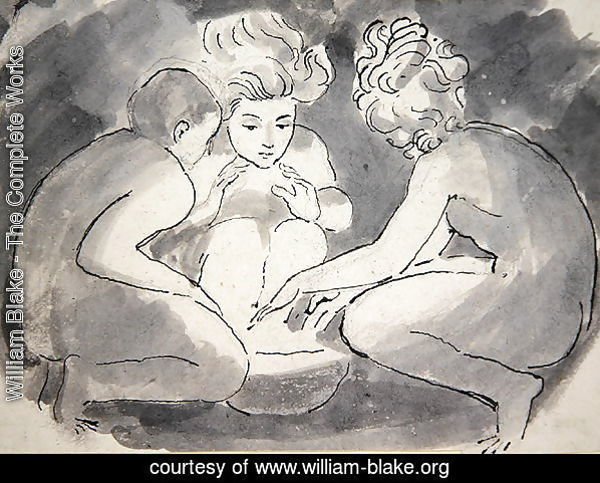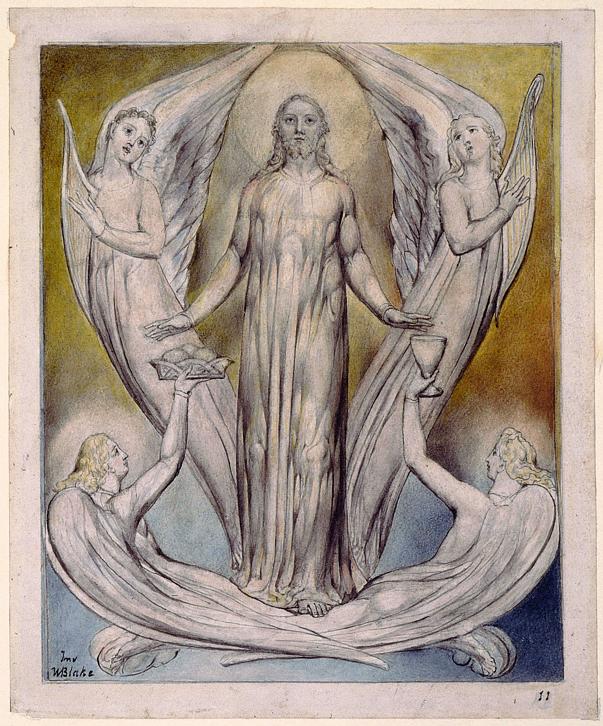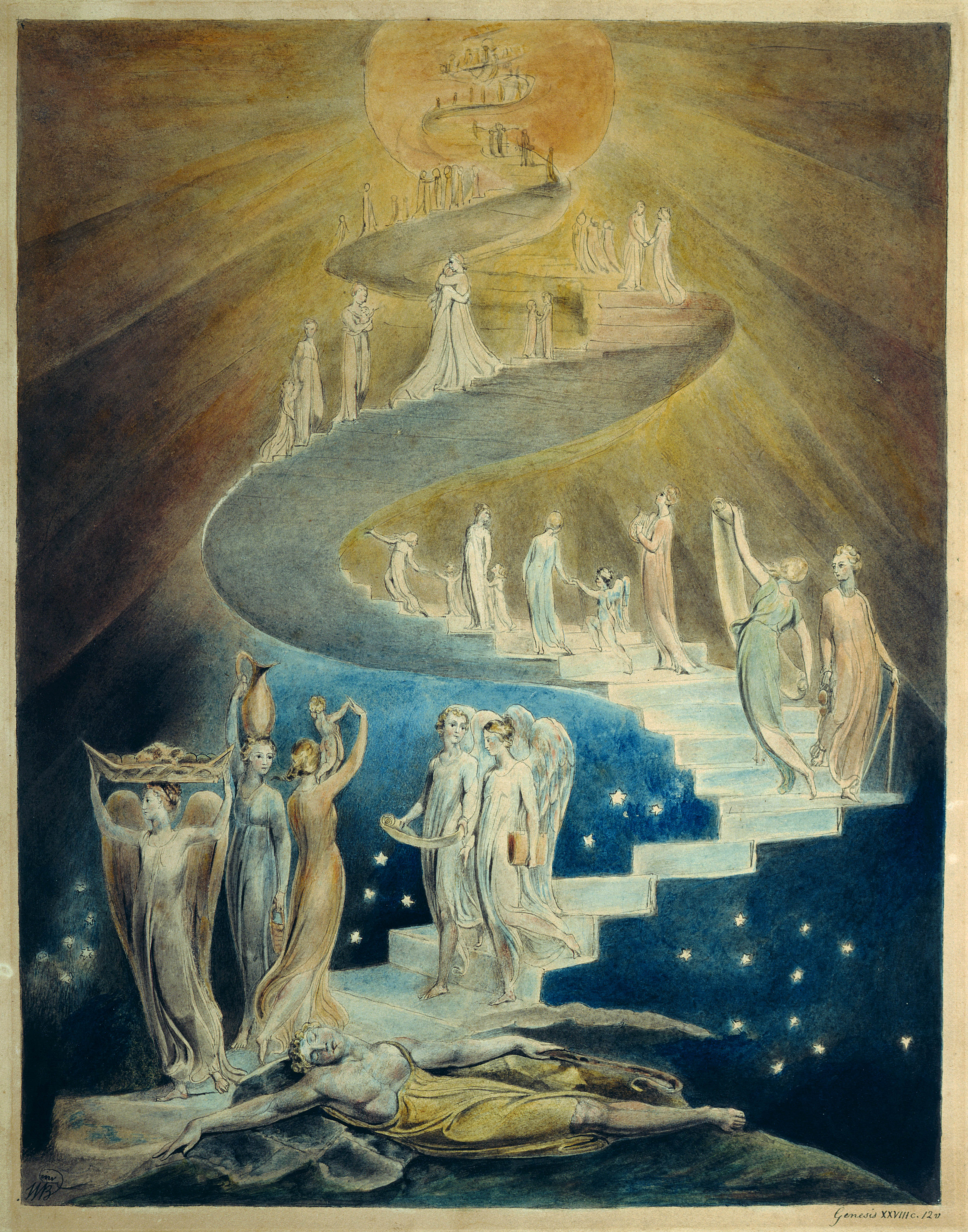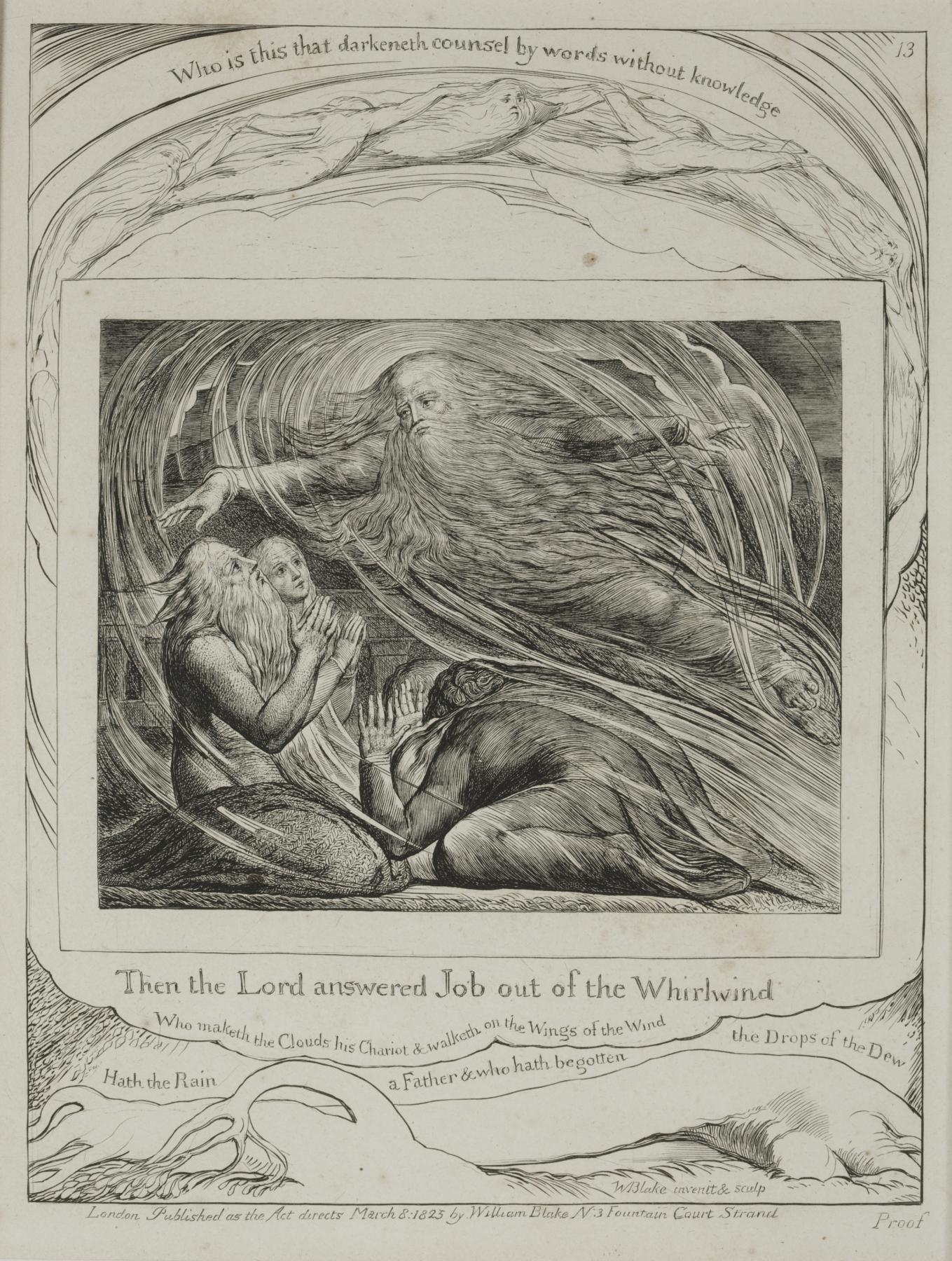In the GOSPEL OF MARK we read:
10:17 - As he began to take the road again (after welcoming
the children), a man came running up and fell at his feet,
and asked him, "Good Master, what must I do to be sure of
eternal life?"
10:18-19 - "I wonder why you call me good," returned Jesus.
"No one is good - only God"
We learn from Blake too, that 'good and evil' are terms of
judgment not forgiveness. Even Jesus did not wish to be
called 'good.' Calling him 'good' forces us back into the old
system of law and vengeance. The New Testament teaches
that the alternative to the law is 'the inspiration of the Holy
Spirit' through whom we can love, trust, forgive and hope
for the glorious unfolding of God's grace.
JERUSALEM plate 49
"Because the Evil is Created into a State. that Men
May be deliverd time after time evermore. Amen.
Learn therefore O Sisters to distinguish the Eternal Human
That walks about among the stones of fire in bliss & woe
Alternate! from those States or Worlds in which the Spirit travels:
This is the only means to Forgiveness of Enemies"
In Circle of Destiny Milton Percival explains the beginning of the fall thus:
"The great cosmic break in which the fine relationship of the contraries is destroyed is the work of the Spectre. Blown with pride in his emanative life, he abstracts from it a set of qualities called Good. In his arrogance he believes that these qualities which he admires are due to his own activities; he does not realize that they are but the result of the undisturbed functioning of an harmonious whole."
So partaking of the 'fruit of the tree of good and evil' means naming part of the whole, good and claiming it as one's own. Forgiveness is the reversal of that process. By not claiming good as one's own or as something anyone can possess, we put God who includes all things into the right position. We recognize Evil as a State, not a quality or a human being. Forgiveness loses sight of the State by focusing on the individual as part of the Divine Being.
JERUSALEM Plate 99
Erdman says of this image: "God does not appear as beams of light to outshine the flames of Hell but as a human father welcoming a lost prodigal."
 | |||
| Yale Center for British Art |













